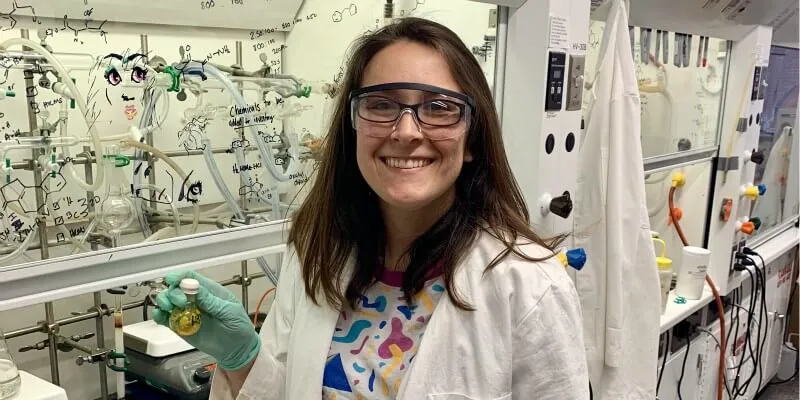Women are enrolling in math and science graduate programs in ever increasing numbers, but they continue to remain underrepresented nationally in tenure track academic positions.
Chemistry graduate student Magenta Hensinger is doing her part to change that trend. She was recently presented with The Mariafranca Morselli Leadership Award, given annually by the UVM Women’s Center to a woman in a scientific discipline who demonstrates leadership qualities, academic excellence and contributes to the interests of women on campus.
Hensinger studied chemistry at Millersville University, a state university in Pennsylvania. She narrowed down her graduate school search to five research universities including UVM. Looking through peer review journal articles, she came across Matthais Brewer’s research.
“I was looking for a program that matched up with my research interests, and Matthais’ work was exciting,” she said. “Grad school is a five-year commitment, so you want to get it right.”
On her first visit to UVM she discovered a collaborative atmosphere, a likeable peer group of chemistry grad students, and a knowledgeable and committed mentor in principal investigator Matthias Brewer.
As part of the Brewer Group, Hensinger studies a specific type of reaction accessing vinyl cations. The research can be useful in synthesizing natural products in the lab that have the potential to be used in drugs. Another student in her lab is using the methodology to make natural products, studying its bioactivity, and testing the beneficial or adverse effects.
As her graduate career progressed, Hensinger saw opportunities for building community and advocating for women’s interests in chemistry. An older graduate student sent out a survey to the women in the department and brought the data to department leadership. This led to inviting more female speakers to campus in addition to sparking an interest for having an informal group of women graduate students and post-docs.
“When I first started here, the topics were geared toward academia—but recently we’ve invited more women from industry or science education. We also schedule a 30 to 40 minute informal session with speakers where they can talk with us about what it’s like being a woman in the field–how they balance family with work, for instance.”
In the process, Hensinger and her colleagues discovered another group of like-minded graduate students in UVM’s Rubenstein School of Environment and Natural Resources which had organized a similar group. Women from the two colleges have now joined forces to form the UVM Women in STEM Network which holds regular meetings.
The organization has opened its meetings to UVM undergraduates who are considering careers in STEM, and benefit from perspectives of their older peers.
